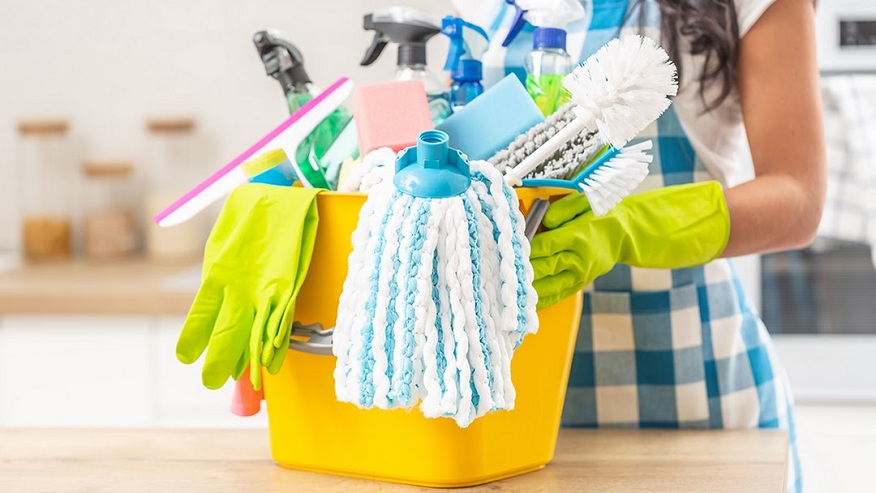Healthcare Facilities: A Comprehensive Approach
Maintaining a high standard of cleanliness in healthcare facilities is not just a matter of aesthetics; it is a crucial aspect of ensuring patient safety and preventing the spread of infections. The question of how often healthcare facilities should undergo cleaning is multifaceted, involving considerations such as facility type, patient population, and the specific areas within the facility. In this exploration, we delve into the intricacies of healthcare facility cleaning practices, with a focus on the importance of commercial cleaning Ohio.

The Varied Landscape of Healthcare Facilities
Healthcare facilities encompass a diverse range of spaces, including hospitals, clinics, dental offices, and ambulatory care centers. Each type of facility has its own unique cleaning requirements based on the services provided, patient demographics, and the nature of medical procedures conducted. Recognizing this diversity is vital in determining an effective cleaning schedule.
Factors Influencing Cleaning Frequency
Patient Density and Traffic
- Patient Density: Facilities with high patient density, such as hospitals, may require more frequent cleaning to manage the increased potential for contamination.
- Traffic Intensity: Areas with heavy foot traffic, including waiting rooms and corridors, should undergo regular cleaning to address the continuous influx of people and the potential spread of contaminants.
Nature of Medical Procedures
- Invasive Procedures: Areas where invasive medical procedures take place demand rigorous cleaning protocols due to the heightened risk of infection transmission.
- Sterile Environments: Operating rooms and sterile environments necessitate meticulous and frequent cleaning to maintain the highest standards of cleanliness and prevent surgical site infections.
Vulnerability of Patient Population
- Immunocompromised Patients: Facilities serving immunocompromised populations, such as oncology units, require enhanced cleaning measures to protect vulnerable patients from infections.
- Pediatric Facilities: Pediatric facilities catering to children may necessitate more frequent cleaning to account for the unique challenges posed by young patients.
Tailoring Cleaning Schedules to Facility Types
Hospitals: The Epicenter of Comprehensive Cleaning
Hospitals, as bustling hubs of medical activity, demand a robust and frequent cleaning regimen. The dynamic nature of hospital environments, with a constant influx of patients, healthcare professionals, and visitors, heightens the risk of pathogen transmission. A well-organized commercial cleaning schedule in Ohio is paramount to maintaining the cleanliness standards required in these complex settings.
Clinics: Balancing Efficiency and Precision
Clinics, including primary care and specialty clinics, require a balanced approach to cleaning. While patient density may not match that of hospitals, the focused nature of medical services provided necessitates precision in cleaning practices. Regular, thorough cleaning remains crucial to upholding a safe and hygienic environment for both patients and healthcare staff.
Dental Offices: Prioritizing Infection Control
Dental offices dealing with close patient contact and the potential for aerosolized particles during procedures must prioritize infection control. Frequent cleaning, especially in treatment rooms and waiting areas, is essential to minimize the risk of cross-contamination and maintain a sterile environment.
Ambulatory Care Centers: Tailoring Cleaning to Services Offered
Ambulatory care centers, offering a range of outpatient services, should tailor their cleaning schedules to the specific services provided. For example, areas conducting minor procedures might require more frequent cleaning compared to waiting areas.
The Role of Commercial Cleaning in Ohio
Specialized Expertise
Commercial cleaning services in Ohio specializing in healthcare facilities bring a wealth of expertise. Trained professionals understand the unique cleaning requirements of medical settings and are equipped to implement targeted cleaning strategies.
Compliance with Regulations
Healthcare facilities must adhere to strict regulatory standards, and commercial cleaning services play a crucial role in ensuring compliance. Professionals are well-versed in the regulations governing cleanliness and sanitation in healthcare settings.
Utilization of Advanced Equipment
Commercial cleaning services utilize advanced equipment and cleaning solutions tailored to the healthcare industry. This includes HEPA-filtered vacuums, antimicrobial agents, and specialized disinfection technologies that contribute to a higher level of cleanliness.
Strategies for Effective Healthcare Facility Cleaning
Implementing Zoning Strategies
- Define Cleaning Zones: Divide healthcare facilities into cleaning zones based on the level of contamination risk. High-risk zones, such as surgical areas, demand more frequent and stringent cleaning.
- Establish Cleaning Protocols: Develop specific cleaning protocols for each zone, considering the nature of activities conducted in those areas. This ensures a targeted and efficient cleaning approach.
Incorporating Regular Audits and Assessments
- Routine Audits: Conduct routine audits of cleaning practices to evaluate their effectiveness. This involves assessing cleanliness levels, adherence to protocols, and identifying areas for improvement.
- Feedback Mechanisms: Establish feedback mechanisms involving healthcare staff to gather insights into cleaning performance. This collaborative approach enhances the overall efficacy of the cleaning process.
Leveraging Technology for Monitoring
- Utilize Cleaning Apps: Explore the use of cleaning management apps that facilitate real-time monitoring of cleaning activities. These apps can streamline communication, track cleaning schedules, and provide data for performance analysis.
Conclusion
In conclusion, the frequency of cleaning in healthcare facilities is not a one-size-fits-all proposition. It requires a nuanced understanding of the facility type, patient population, and the specific challenges posed by medical activities. Commercial cleaning in Ohio emerges as a vital partner in this endeavor, offering specialized expertise, compliance assurance, and the utilization of advanced cleaning technologies.
A holistic approach to healthcare facility cleaning involves tailoring cleaning schedules to facility types, incorporating specialized strategies, and embracing continuous improvement through audits and technology. By prioritizing cleanliness in healthcare settings, we contribute to a safer and healthier environment for both patients and healthcare professionals.
